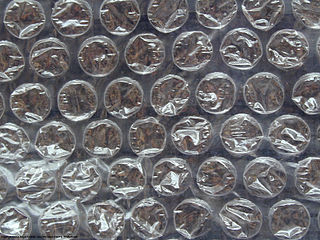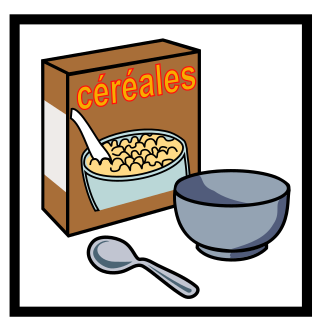Tissue may refer to:
Tissue may refer to:

A beta particle, also called beta ray or beta radiation, is a high-energy, high-speed electron or positron emitted by the radioactive decay of an atomic nucleus during the process of beta decay. There are two forms of beta decay, β− decay and β+ decay, which produce electrons and positrons respectively.

Toilet paper is a tissue paper product primarily used to clean the anus and surrounding region of feces, and to clean the external genitalia and perineal area of urine.

Origami is the Japanese art of paper folding. In modern usage, the word "origami" is often used as an inclusive term for all folding practices, regardless of their culture of origin. The goal is to transform a flat square sheet of paper into a finished sculpture through folding and sculpting techniques. Modern origami practitioners generally discourage the use of cuts, glue, or markings on the paper. Origami folders often use the Japanese word kirigami to refer to designs which use cuts.
Streamer or streamers may refer to:

A towel is a piece of absorbent cloth or paper used for drying or wiping a surface. Towels draw moisture through direct contact.

A paw is the soft foot-like part of a mammal, generally a quadruped, that has claws.

Shrink wrap, also shrink film, is a material made up of polymer plastic film. When heat is applied, it shrinks tightly over whatever it is covering. Heat can be applied with a handheld heat gun, or the product and film can pass through a heat tunnel on a conveyor.

Tissue paper or simply tissue is a lightweight paper or, light crêpe paper. Tissue can be made from recycled paper pulp on a paper machine.

Wrapping tissue is a translucent, thin tissue paper used for wrapping and cushioning items.

Kraft paper or kraft is paper or paperboard (cardboard) produced from chemical pulp produced in the kraft process.

Package cushioning is used to protect items during shipment. Vibration and impact shock during shipment and loading/unloading are controlled by cushioning to reduce the chance of product damage.

Larentiinae is a subfamily of moths containing roughly 5,800 species that occur mostly in the temperate regions of the world. They are generally considered a subfamily of the geometer moth family (Geometridae) and are divided into a few large or good-sized tribes, and numerous very small or even monotypic ones which might not always be valid. Well-known members are the "pug moths" of the Eupitheciini and the "carpets", mainly of the Cidariini and Xanthorhoini. The subfamily was described by Philogène Auguste Joseph Duponchel in 1845.

Gift wrapping is the act of enclosing a gift in some sort of material. Wrapping paper is a kind of paper designed for gift wrapping. An alternative to gift wrapping is using a gift box or bag. A wrapped or boxed gift may be held closed with ribbon and topped with a decorative bow.

Triphosa dubitata, the tissue, is a moth of the family Geometridae. The species was first described by Carl Linnaeus in his 1758 10th edition of Systema Naturae. It is found from north-west Africa across the Palearctic to Japan.

Bubble wrap is a pliable transparent plastic material used for packing fragile items. Regularly spaced, protruding air-filled hemispheres (bubbles) provide cushioning for fragile items.
The conservation and restoration of ivory objects is the process of maintaining and preserving objects that are ivory or include ivory material. Conservation and restoration are aimed at preserving the ivory material and physical form along with the objects condition and treatment documentation. Activities dedicated to the preservation of ivory objects include preventing agents of deterioration that specifically connect with ivory as a material, preventative conservation, and treatment of ivory objects. Conservators, curators, collections managers, and other museum personnel are in charge of taking the necessary measurements to ensure that ivory objects are well maintained and will make the decision for any conservation and restoration of the objects.
The conservation and restoration of papyrus material is an activity dedicated to the preservation and protection of objects of historical and personal value made from papyrus from Ancient Egypt.

Triphosa haesitata, the tissue moth, is a species of geometrid moth in the family Geometridae. It is found in North America.

Packaging waste, the part of the waste that consists of packaging and packaging material, is a major part of the total global waste, and the major part of the packaging waste consists of single-use plastic food packaging, a hallmark of throwaway culture. Notable examples for which the need for regulation was recognized early, are "containers of liquids for human consumption", i.e. plastic bottles and the like. In Europe, the Germans top the list of packaging waste producers with more than 220 kilos of packaging per capita.

Overpackaging is the use of excess packaging. The Institute of Packaging Professionals defines overpackaging as “a condition where the methods and materials used to package an item exceed the requirements for adequate containment, protection, transport, and sale”